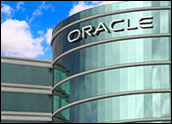
Not that it’s a done deal like the title might suggest, but Siebel seems to be reconstituting itself into a rival power in the CRM market once again.
After Oracle OpenWorld, I made the observation that Siebel appeared to be returning to its old prominence. The introduction of new products based on Web 2.0 ideas, the continued strength in all global markets, and the continued investment in its on-demand (and on-premises) capacity all augured well for what is now a unit of Oracle.
Before the acquisition, Siebel suffered a brain drain as a lot of good people decided for one reason or another not to stick with the company. A lot of them were just plain burned out and needed some down time. Eventually, some went to other vendors and others started businesses — some people even came back. Most have done well. The people who stayed, augmented by some key additions from elsewhere in the Oracle universe, have resulted in a good blend of talent and a unified vision under the leadership of Anthony Lye. So for the first time in several years, Salesforce.com and others have some bona fide competition.
All that is well and good, but the events of the last few weeks have changed the marketplace so much — at least potentially — that you have to question the future of CRM, not because it is going away, but because in a credit-restricted economy, buying and selling will be very different. Even the idea of what a customer is will need reevaluation.
New Products
At OpenWorld, Siebel introduced new technology that can generally be categorized as CRM 2.0. As a matter of fact, other vendors have also introduced similar social applications, so Siebel gets no points for being first in that domain. Siebel’s parent does get some props for bringing the concept together into what will be a social CRM platform. Its outlines are clearly visible right now with products like Sales Prospector, Sales Campaigns, Sales Library and Deal Manager. An application dealing with customer loyalty is in the works, and enough was in place for Siebel VP Melissa Boxer to confidently demonstrate it at OpenWorld.
Most intriguing to me is that Lye determined from the get-go that the social applications would work well not only with Oracle-Siebel but other CRM applications as well. Given Oracle’s penchant for collecting CRM applications, you might call that making lemonade from your lemons, but there are numerous other CRM applications that the Oracle-Siebel Social CRM applications will work with too.
What’s interesting to me about all this is the timing of the social CRM phenomenon — and here we need to widen the focus from Oracle-Siebel to the whole community of CRM vendors dedicated to developing CRM 2.0. A couple of years ago when the movement got started, no one paid a lot of attention to social applications that tried to recognize the centrality of the customer in CRM.
Actually, you could go back to about 2002 to see the first inklings of community and social media in CRM, but at that time the vendors I spoke with weren’t even sure they wanted to be classified as CRM. One, which will remain nameless, even told me that CRM had such a negative connotation that they’d try something else. But I digress.
By putting several social applications together at the service of CRM, Oracle-Siebel has effectively said, the CRM we all know is still relevant as a transaction engine. Dealing with customers in a marketplace that has changed significantly in the last few years (and especially recently) requires new ways of looking at things. How fortunate that the whole CRM 2.0 industry got started back when no one thought it was needed. New ways of looking at things almost always need new tools, and that’s where we are right now. Actually, it’s hard to say if new tools make new thinking possible or the other way around, and it doesn’t matter.
A Difference of Orientation
Oracle-Siebel is not the only player to come up with this formulation. From a completely different perspective, Salesforce.com has been plowing the same field for a few years. The big difference, as I see it, it is that Salesforce decided to provide the tools and platform to partners and then stepped back to see what evolved. It was a good strategy, too, and the company now boasts close to 1,000 partner-developed applications in its ecosystem. Quite a feat, though only a fraction deal with CRM 2.0.
Where the two approaches differ is in orientation. Oracle-Siebel is highly focused on selling and applying social applications for a few very specific business processes. Salesforce’s approach is to let 1,000 flowers bloom, to see what new business processes are developed and which conventional processes get an upgrade. Each is worthy, and it is impossible to say at this point which approach is best — the market will decide.
My instinct says that the Siebel approach is designed to appeal to the entrenched market in enterprise software. Salesforce is trying to appeal to the same market, but its roots in smaller markets might suggest success there first. Regardless, the business processes associated with front office computing are changing, creating a new opportunity for selection and evolution to do their jobs.
Denis Pombriant is the managing principal of the Beagle Research Group, a CRM market research firm and consultancy. Pombriant’s research concentrates on evolving product ideas and emerging companies in the sales, marketing and call center disciplines. His research is freely distributed through a blog and Web site. He is working on a book and can be reached at [email protected].























































Social CRM
See all Social CRM